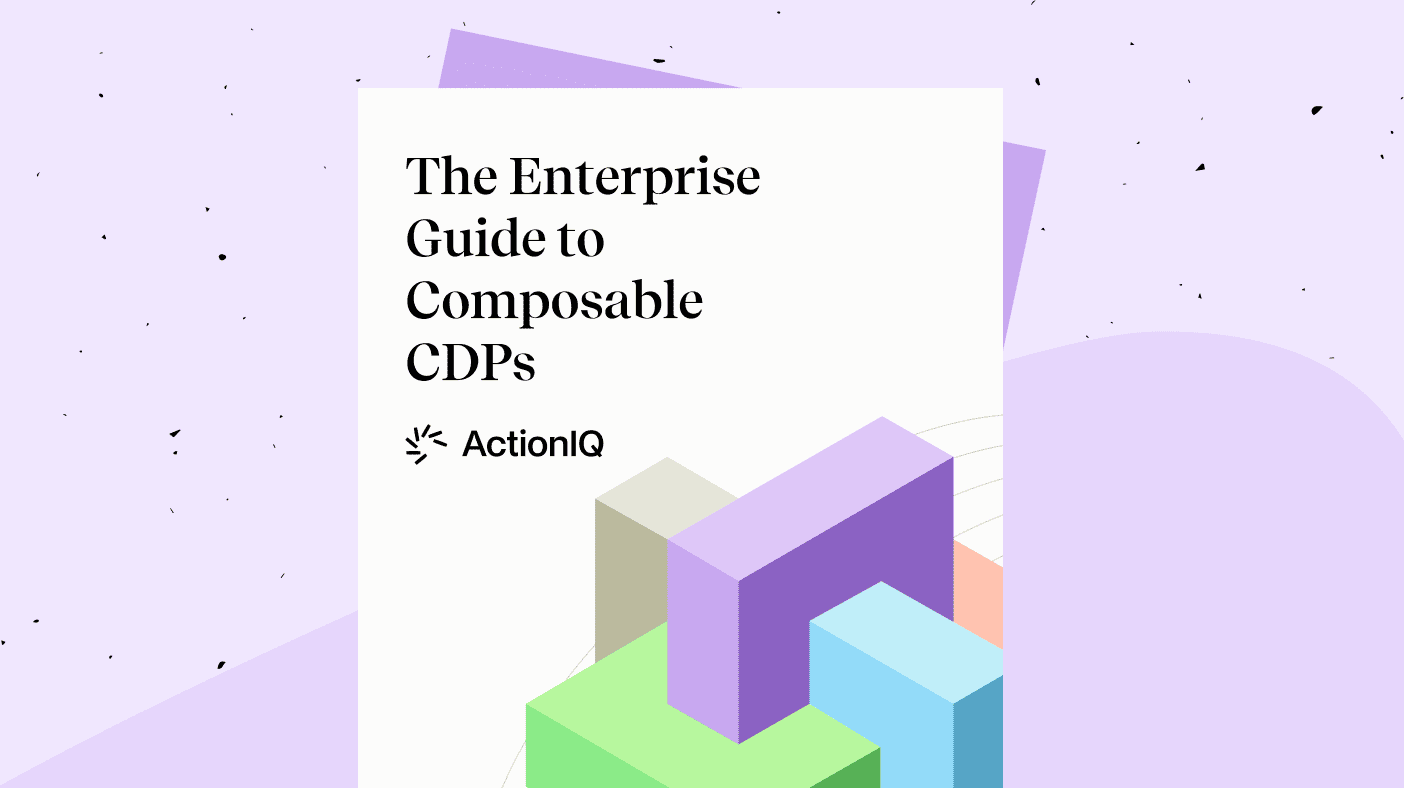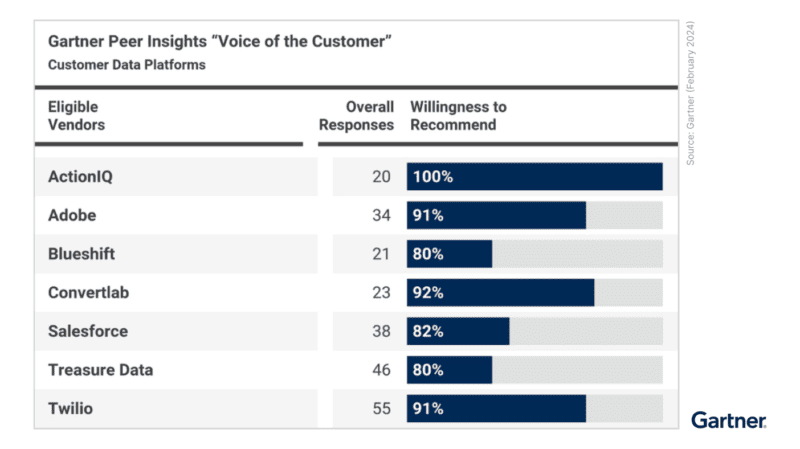Stop Writing SQL for Every Marketing Request

Are your eyes burning reading this? Are you or your team seeing brackets in your dreams? Do you have massive amounts of audience requests coming in from marketing, clogging up your inbox? If so, you’ve been writing too much SQL for your marketing team.
You did click on this post after all, so you’re either here because you’re a data engineer writing too much SQL or you’re a marketer waiting so long for audience segments that by the time you get them, it’s too late.
The good news is that there’s a better way for everyone. Enter the composable CDP.
What’s a Composable CDP?
Composable CDPs are customer data platforms (CDPs) that map to the data where it lives, such as a data warehouse, rather than forcing companies to make a copy of the data and store it somewhere else. This is great for IT and data infrastructure teams because they don’t need to worry about storing data in two different places, data getting out of sync, introducing more risk in data security and privacy, or long deployment cycles.
Composable CDPs accomplish this by using a zero-copy architecture with capabilities to eliminate local storage of data copies. The warehouse agnostic approach offers flexibility so that teams can select their preferred cloud infrastructure while providing business teams with an advanced no-code interface.
Let’s break down key terminology:
- Zero-copy architecture: Zero-copy architecture avoids duplication of data and associated costs and security risks by allowing data computation to be performed in place within a company’s own data infrastructure. This design enables companies to leverage their existing data storage and processing resources — rather than copying data to external systems or vendors.
- Warehouse-agnostic: Things change and the composable CDP should not be tied to a single data warehouse or storage system and should instead work with any type of data storage system. This is important because it allows the system to be more flexible and adaptable based on different client use cases.
- No-code UI: In order for a composable CDP to benefit the IT and data organization, it needs to enable marketers to self-serve data and insights. As such, composable CDPs must offer a no-code interface into the data warehouse that does not require SQL. The CDP should be able to act as a translation layer between a no-code UI and SQL that will run on the data warehouse.
With composable CDPs, brands use applications that integrate with the data system through a native query push down native query push down – literally pushing the queries down from the CDP to the data warehouse, and running the compute there, so business teams can access the freshest data stored without IT losing any control over data access and governance.
In a nutshell, composable CDP’s enable all of the audiences, with none of the headache. But seeing is believing — here’s some SQL-free inspiration from brands that have done it.
Atlassian’s Composable CDP Unlocks IT-Friendly Strategies for Marketers
Atlassian needed to reduce resource drain on data engineering teams, and wanted to build on their existing data infrastructure.
“We want to build on what we already have. The data engineering teams have done incredible work over the years to create business domain models, for example, and we don’t want to start over from scratch,” said Sravan Gupta, Senior Manager of GTM Systems at Atlassian.
They turned to ActionIQ’s composable CDP to help make the most of their existing infrastructure and scale.
The marketing toolset for composable CDPs like ActionIQ are decoupled from any infrastructure layer. This allows organizations to map the platform directly to any customer data warehouse and query data directly in that environment, instead of needing to build expensive data pipelines that bring copies of data into the system.
By using a composable CDP, the marketing team gains the functionalities they need for their use cases, while IT teams can remain singularly focused on their existing infrastructure and data centralization work. Technical teams corralling data from across the enterprise into a data warehouse, for example, shouldn’t have to dedicate even more resources to doing the same for marketer. Instead, CDP technology should tap into that data strategy without additional engineering and drive real business impact.
“Composable architecture enables us to reduce vendor lock-in and help control total cost of ownership of our stack,” says Gupta. “Atlassian has found incredible savings on paid ad spend due to the increased scale of suppressions – being able to stream millions of records to ad platforms to suppress ineligible customers.”
“And campaign velocity has shot up because we’ve removed the bottleneck of data teams from writing SQL queries to create audience segments. Instead, we can give that power to somebody in marketing operations or the marketers themselves to create these segments and power these digital campaigns. That has reduced our time to market by almost 20% on omnichannel campaigns,” he added.
IT Teams at Pandora Stop the “SQL Crazy Train”
Pandora had massive amounts of data, including years of detailed digital consumption data spanning more than 100 million users — down to the “when, what, where and how long” each user engaged with specific content. The billions of granular user events contained the data that had the potential to provide incredible experiences for every user — but their data was too much for their old CDP to handle the scale.
Instead, any time marketers needed data to run a campaign, they had to put a request in for technical specialists that kicked off a series of tasks that became not-so-affectionately known by the IT team as “the SQL crazy train.” Marketing campaigns were limited, while IT teams were spending way too much time writing SQL.
“We were very hamstrung by the processes, it was very manual. It turned into what we jokingly referred to as the “SQL Crazy Train, which was just a never ending stream of requests. If Drake drops a new release, who are the people we should message about that. We wanted to drive the right message at the right time, but were unable to execute on as many campaigns as we’d like because it was such a manual process. It forced us into a spray-and-pray.”
– David Hassler, Director of Software Engineering, Pandora
When Pandora needed to take back their IT team’s time, they turned to ActionIQ to help deliver scale, usability and efficiency. They first focused on data access and enabling marketers to create, orchestrate and measure audiences completely on their own. Then, the team expanded use-cases to save acquisition spend by suppressing acquisition-centered offers from existing subscribers — saving millions in advertising dollars and countless hours for the whole team.
“Our marketing teams can now self-serve with the ActionIQ AI in order to compose these audiences, and kind of kick the tires and look at audience sizes and estimate what click-through might be. It’s great from an engineering perspective because we don’t have to support those processes anymore. This took a large load off the engineering team. Secondly, those analysts on the SQL crazy train don’t have to write all these specialized queries and can think much larger now.”
– David Hassler, former Director of Software Engineering, Pandora
The best part? Within just 90 days of using ActionIQ, Pandora reduced their CAC in key segments by 50%. Now, Pandora’s marketing team can easily create audiences directly from 30 billion rows of customer data to generate 1.5 billion customer activations per day through more than 15 different channels integrated with ActionIQ.
All Aboard for Composable CDPs
IT and data teams have worked hard to centralize all of their company’s data to drive the business forward — so why not maximize those efforts with a CDP that queries directly in your data warehouse (and gives marketers a self-serve interface)?
Want to learn more about how you can hop off the SQL crazy train? Check out The Enterprise Guide to Composable CDPs for the blueprint of a composable CDP, and discover how composable CDPs could amplify your business.





